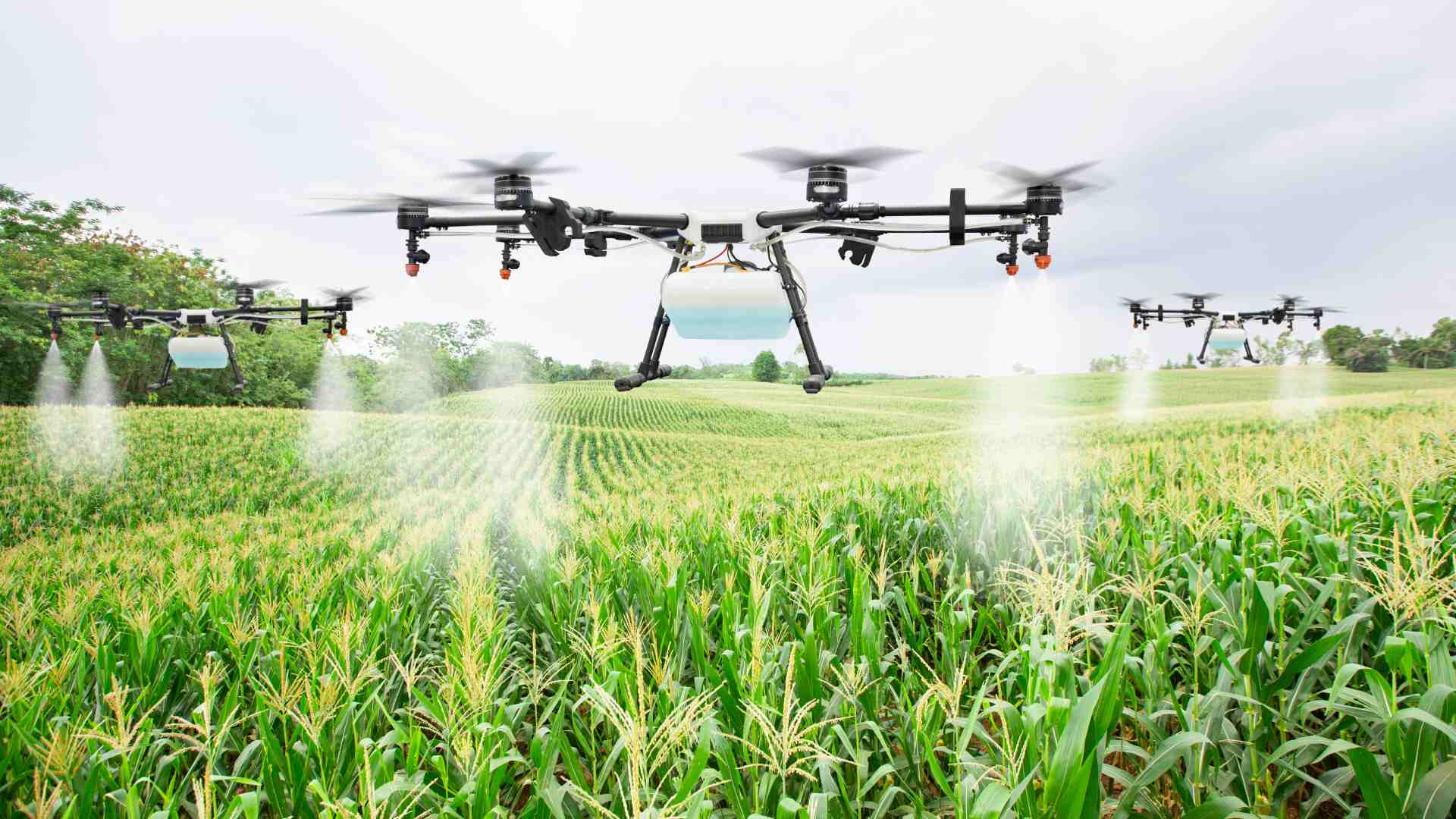
This month, the South African AgriTech startup Aerobotics raised $137M Series B for its precision agriculture platform. Using a combination of satellite imagery, drones and AI-based analytics, the startup helps farmers monitor their crops, reduce their carbon footprint and increase their overall crop yield. This funding round is just one example of the rise of precision agriculture as a promising answer to the global food crisis. Indeed, the AgriFood Tech Investment Review report indicates that investment in digital technologies accounted for 41% of the deal activity in 2019.
Precision agriculture can be defined as an approach to farm management that uses information technology (IT) to ensure that crops and soils receive exactly what they need for optimum health and productivity. The data used in precision agriculture can be collected 2 ways:
- Aerial imagery – drones, planes and satellites help to create bird-eye views of the cultivated area, which can be used to analyze a number of parameters such as the amount of water in the soil or the health and maturity of a crop. Normalized Difference Vegetation Index (NDVI) imagery is a method of measuring crop health based on the greenness of a plant.
- Soil sensors – these are used to measure the most essential parameters and chemical properties of the soil. They can be electromagnetic, electrochemical, mechanical, etc. Electrochemical sensors provide information on nutrient availability and pH in the soil, allowing crop stress and diseases to be detected 3-4 weeks in advance.
Multiple technologies have been developed in recent years for different applications: farm planning, field mapping, soil sampling, tractor guidance, crop scouting, yield mapping, etc. By moving from homogenous to individual processing, these technologies have impacted the entire agricultural value chain – from input supply to the end customer – and improved crop yields while achieving sustainability goals (limited resource use and environmental degradation). Among the technologies that have been developed, 5 main ones can be identified:
- Remote sensing technology – these technologies use remotely sensed data to measure the most essential parameters on a farm.
- Variable rate technology (VRT) systems – they use the data collected to automate the amount of input (seeds, fertilizers, pesticides, water) applicable within defined farming areas. These technologies can be used for seeding crop fields, spraying pesticides, applying fertilizers, spreading manure, etc. Irrigation systems are the most common control systems. They allow the exact amount of water to be distributed. Startup CropX has developed an analytics software that integrates with irrigation systems to help increase crop yields.
- Satellite positioning systems – global positioning systems (GPS) enable to calculate precise locations and positions. These systems are used for navigation but also for geo-referencing information. For instance, farmers use GPS to collect geo-referenced soil samples to check nutrients, pH levels and other data to make profitable decisions.
- Equipment guidance and automated steering systems – they automate farmers’ slow, repetitive and tedious tasks, such as harvesting crops or blowing seeds. Autonomous machines are slowly appearing in the industry, using computer vision to distribute fertilizers accurately – studies show that fertilizer use can be reduced by up to 80%.
- Geo-mapping – it is a technology used to create maps of various soil and crop conditions.
In recent years, large agricultural players have joined forces with startups to shape the future of the agricultural industry. ADAMA, one of the world’s leading crop protection companies, recently announced a partnership with startup Taranis, to develop an end-to-end precision agriculture solution.
Although precision agriculture is a golden opportunity for global food security and crop yields, some challenges still need to be addressed. One of the first obstacles to its adoption is the high investment costs. Another is that most solutions have been designed for large, homogenous farms and are therefore not suitable for small, diversified farms. In addition, as precision agriculture has only recently taken off, there is still is a lack of experience in the use of drones, robots, and other precision agriculture tools, as well as a lack of connectivity between all the different devices and software (but should fame over time). Last but not least, the complexity of managing data privacy and cybersecurity is problematic (most of the cyber threats faced by precision agriculture are consistent with those in other connected industries: data theft, theft of resources, reputation loss, destruction of equipment, or gaining an improper financial advantage over a competitor).
To conclude, precision agriculture is undergoing a rapid transformation. The use of GPS guidance, aerial mapping, robotics, and drones is pushing towards sustainable agricultural practices that can have a positive impact on social, environmental, and economic aspects, but it remains a challenging opportunity. While not all companies will succeed in the transition, those that do will shape tomorrow’s sustainable food supply.
2 Key Figures
210 Precision agriculture startups
registered by Crunchbase
Market size expected to reach $11.1bn by 2025
The market size is expected to reach $11.1bn by 2025, rising at a CAGR of 13.9%.
3 startups to draw inspiration from
This week, we identified three startups that we can draw inspiration from: GramworkX, Karnott and Arable.
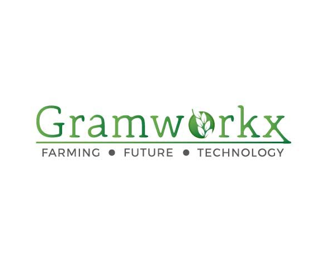
GramworkX
GramworkX has developed an IOT and AI enabled smart farm resource management tool, which helps the farmers guide, optimize and monitor utilization of water. The technology includes a unique machine learning algorithm, which provides micro-climatic condition predictions for the farmer to take accurate and proactive decisions.

Karnott
Karnott offers a tracking software coupled with a connected device that tracks agricultural equipment. Karnott places an automatic, autonomous, mobile, real-time device in tractors, trailers, or seeders to collect data, and then their software automatically calculates, analyzes, and archives it.

Arable
Arable is an agricultural data and analytics company that offers the world’s first IoT-enabled irrigation management tool, weather station, and crop monitor in one, the Arable Mark. Reliable data-driven decision-making saves customers time and money, reducing risk while preserving natural resources.
123Fab #29
1 topic, 2 key figures, 3 startups to draw inspiration from
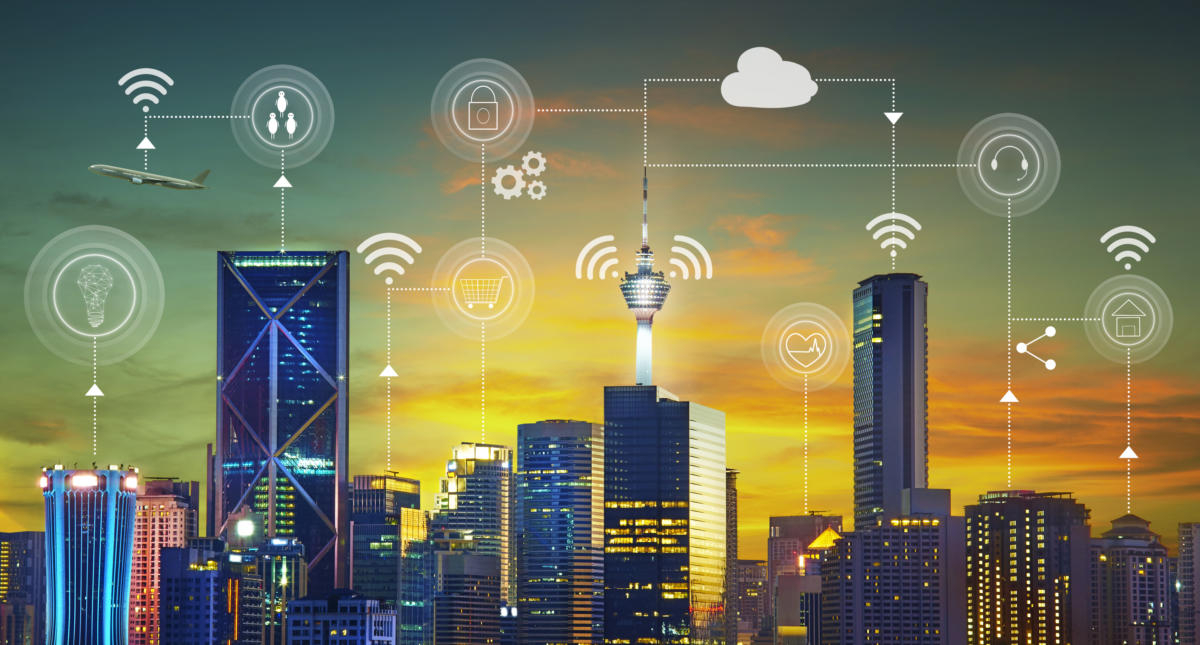
Unfortunately, edge-connected devices have added numerous entry points for hackers to target. The vast Mirai botnet attack in 2016 is just one example. By infecting Internet of Things (IoT) devices, the Mirai malware turned 100,000 devices into a network of remote-controlled bots, which had the effect of wiping the east coast of the US off the internet for a day. Another example is the hacking of the internet-connected fish tank in a Las Vegas casino a year later.
Edge Computing is a distributed computing paradigm that brings computation and data storage closer to the data collection point, to improve response times and save bandwidth. Instead of being processed in a data center, data is processed locally in the device itself. While processing often involves normalizing and analyzing the data stream to look for business intelligence, only the results of the analysis are sent back to the principal data center.
In recent years, the Edge Computing market has surged, mainly bolstered by the development of 5G and IoT technologies. While 9% of the world’s data was processed via edge computing in 2020 (compared to 91% via the cloud), it is projected to reach 75% by 2025. As the number of applications grows — autonomous vehicles, industrial manufacturing, smart devices, and homes — edge computing is all the more a significant threat to cybersecurity. Indeed, the computing paradigm is based on connected objects and micro data centers, which are often the weakest links and the most obvious gateways for hackers. Therefore, it has been imperative for integrators and providers to comply with stringent directives and regulations, such as the EU’s General Data Protection Regulation (GDPR), to protect the personal data they hold.
Although the cyberrisks are more limited than those of cloud computing, because hackers have to infiltrate decentralized storage systems to access sensitive information, and because the information is not stored in a single data center, attacks can be more frequent. Indeed, edge computing faces 4 key security concerns:
- Architecture — While sending data to the cloud from edge devices is secure (companies control the infrastructure used to encrypt and verify the data), receiving data from the cloud is not. The challenge for companies is to ensure that the data is authenticated and can be safely computed into the IT system. Startup Attila Security helps companies in this respect, by protecting all edge devices and simplifying network security in accordance with National Security standards.
- Fragmentation — All IoT devices have to be authenticated and adhere to privacy policies that give network administrators oversight over their data. As it seemed too challenging to impose a universal privacy policy on the infinite number of IoT devices, Microsoft decided to launch Azure Sphere in 2018 to address the IoT fragmentation. It replaces the general-purpose microcontroller units (MCU) used in most of the connected devices with a secure one, designed so that each subsystem of the chip is securely isolated from the others.
- Physical security — Devices are vulnerable to theft and infiltration. A simple USB key can be used to upload counterfeit software or firmware that changes the configuration of the device to access the private data. Encrypted tunnels, firewalls, and access control are therefore essential.
- User Error — Given the multitude of devices within the edge (connected together and within networks), experts have a hard time implementing cybersecurity solutions. A solution to user errors and external edge attacks is to rely on a third-party management program.
Although there are many solutions to prevent attacks, certain segments present higher risk use cases than others.
- Autonomous vehicles — Threats are on three levels: control, communication, and sensing. Recently Tencent Keen Security Lab, a Chinese cybersecurity firm, uncovered a range of flaws in BMW’s autonomous vehicles. A team of white-hatted hackers managed to take control of the audio, visual and navigation units without any physical connection. Although BMW has rolled out modifications, it is is all the more alarming as all parts of an autonomous vehicle are managed by a computer. V2V (vehicle-to-vehicle) communication, which is a major source of data for guidance and control systems, is also susceptible to hacking. This can propagate upwards and compromise the security of the control layer.
- Industry 4.0 — Due to the interconnected nature of industry 4.0-driven operations, cyberattacks have far more extensive effects than ever before. Although no single attack could bring down the entire network, the increasing number of entry points makes it crucial for industrial executives to be apprised of the potential risks. Studies show that more than 50% of small and medium-sized businesses have experienced a cyberattack in the last five years and that manufacturing is one of the most frequently targeted industries. However, in comparison, edge computing is still more secure than the cloud.
- Home & wearable accessories IoT — While most people are aware of the risks associated with mismanaging passwords of traditional IT devices, most users aren’t accustomed to the risks associated with IoT devices. Two years ago, for instance, a large number of printers were hacked worldwide urging people to subscribe to PewDiePie’s YouTube channel. Connected watches or wireless headphones are also often hacked. Indeed, Bluetooth devices can leave gaps for security breaches.
To conclude, the rapid growth of the edge computing market (often considered more secure, faster and cheaper than cloud computing) goes hand in hand with the multiplication and scattering of cybersecurity challenges. Not because it is new, but due to the volume of data that is processed. There is no magic recipe for the time being, which is why research and investment will undoubtedly increase drastically in the coming years. According to studies, global cybersecurity spending could reach $134 billion in 2022.
2 Key Figures
268 Edge computing startups
registered by Tracxn
Market size expected to reach $43.4bn by 2027
According to Grand View Research, the market size is expected to grow from $2.5bn in 2019 to $43.4bn by 2027, at a CAGR of 37.4%.
3 startups to draw inspiration from
This week, we identified three startups that we can draw inspiration from: Edgescan, EDJX and Clearblade.
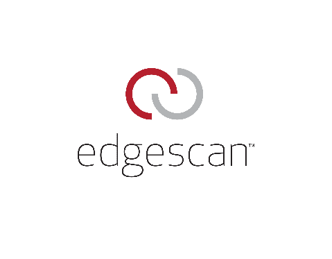
Edgescan
Edgescan is an irish startup that delivers full stack vulnerability management, i.e. deep security assessment of web applications, supporting app servers, components and associated hosting environments. They cover off supporting systems in both cloud and edge data center environments.

EDJX
The USA-based startup EDJX, provides object storage, serverless, and edge services, resulting in zero infrastructure to manage. The company develops hardened and secure nodes suited for industrial environments with low latency.
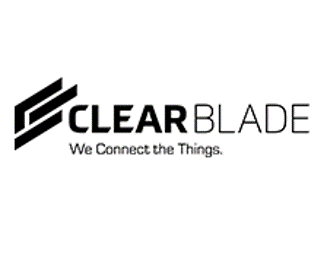
ClearBlade
ClearBlade is an edge computing software company enabling enterprises to rapidly engineer and run secure, real-time IoT applications. Clearblade provides sofwares with encryption, authentication, and authorization of API access including tokens and certificates.
123Fab #27
1 topic, 2 key figures, 3 startups to draw inspiration from
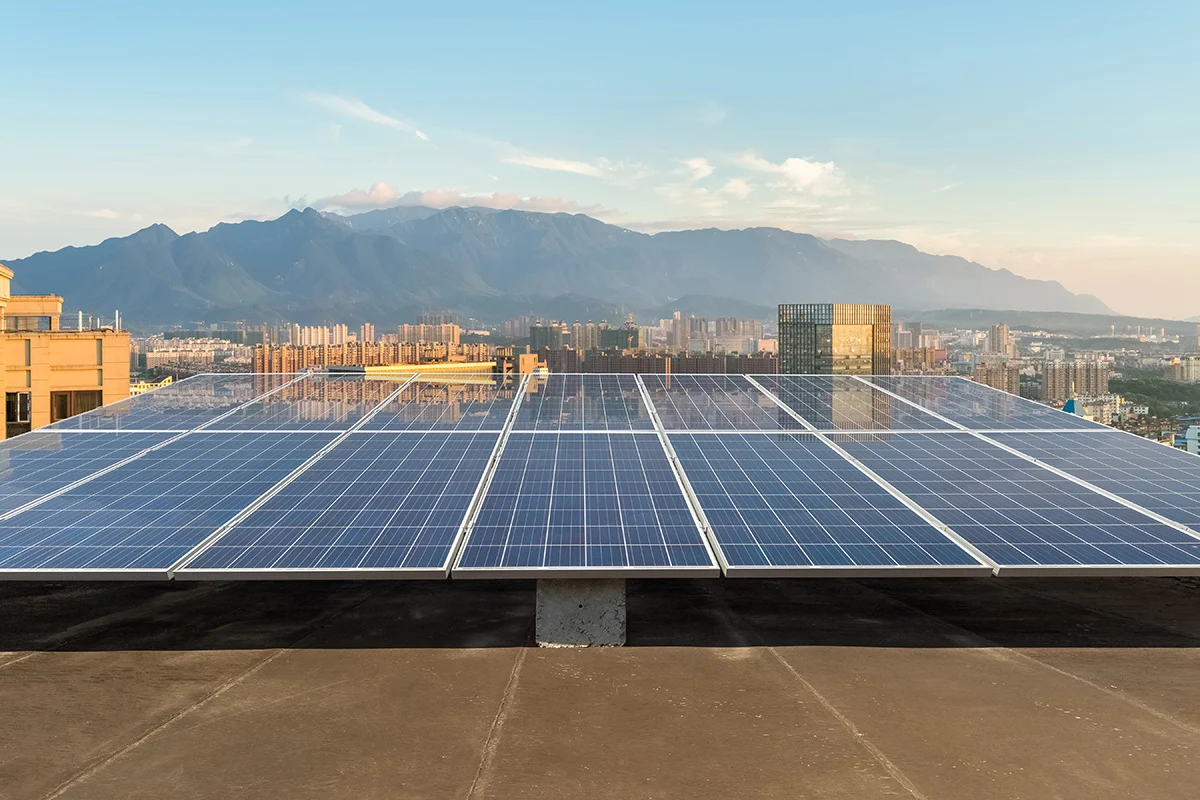
In recent years, the solar photovoltaic (PV) market has gained impetus from the rising demand for alternative sources of energy and the decreasing operating costs. Convinced that solar energy is essential to achieve climate neutrality, the ‘Solar Europe Now’ coalition, which brings together 120+ players across Europe, calls for better integration of solar PV into climate and energy policies. Rooftop PV systems, for instance, are an accessible tool for decarbonizing activities (tertiary or industrial) and can be combined with other energy transition projects (storage, biomass, etc.). And you, do you have any plans in the field of solar energy?
As far as solar energy is concerned, two main technologies are used: photovoltaic (PV) and concentrated solar power (CSP). Unlike CSP, which uses the sun’s energy to convert it into high-temperature heat, PV uses sunlight to convert it into electricity. PV has four main applications: residential, utility-scale, commercial & industrial (C&I) and off-grid.
In this newsletter, we will focus exclusively on utility-scale and C&I applications.
Over the years, solar energy has proven to be more beneficial than before. In addition to being a truly renewable energy that can be harnessed in most parts of the world and will be accessible as long as the sun shines, its applications are multiplying. However, it has also been widely criticized:
- It is weather-dependent – solar panels are dependent on sunlight to effectively collect solar energy. As a result, cloudy and rainy days have a noticeable effect on the energy system.
- Solar storage can be expensive – beyond the initial cost of purchasing solar PV systems, which is fairly high, solar energy also requires large storage systems.
- It uses a lot of space – solar PV is a much more land-intensive technology than coal, natural gas or nuclear power. It uses 44 acres per megawatt compared to 12 for the other three sources. However, it is less than wind and hydro, which use 71 and 315 acres respectively.
- The toxic chemicals used – the PV production process requires the use of cadmium and arsenic. While the EU has implemented strict regulations in place for PV recycling, a large number of countries dump their solar panels in landfills, risking toxic chemicals leaking into the soil.
However, a lot of R&D has been carried out to address these issues in recent years. Startups and corporates have developed new technologies that have reduced the cost of PV systems down and maximized their efficiency. Startup solutions are:
- Creating more efficient materials – startups are integrating new materials into solar panels to maximize the solar PV yield. One example is Australian startup Sapphire, which uses nanostructured ‘black silicon’ to prevent light reflection and allow the cells to absorb more light.
- Developing ways to store more energy – Finnish cleantech startup Teraloop developed an alternative model to electrochemical batteries for storing renewable energy: a flywheel. It is designed to store rotational energy efficiently and meet the requirements of industrial players who need a large amount of energy.
- Producing smarter solar trackers – solar panels are often assembled into arrays on a type of mounting system – rooftop-mounted, ground-mounted, wall-mounted or floating. While mounts can be fixed, they can also be dynamic and use solar trackers to make sure panels always face the sun. These tracking systems are increasingly common in utility-scale projects. In the tracker space, US startup Array Technologies has developed DuraTrack Hz, an industry-leading single-axis tracker. Early October, the startup raised over $1 billion in a public offering.
- Manufacturing more reliable inverters – a large amount of the production loss on solar PV systems is often attributable to the poor performance of inverters, responsible for converting and feeding the power into the grid. This can be due to a faulty installation, overheating issues or an isolation fault. US startup Alencon Systems has developed a system based on a patented harmonic neutralization approach, an upgrade from the pulse-with modulation used by PV inverters today.
Beyond efficiency, startups are also addressing sustainability issues. We have recently seen the development of organic photovoltaic (OPV) cells that use thin-film organic semiconductors – typically polymers or small molecules. The EU has also been investing to develop systemic circular business solutions. This is in particular the object of study of the 2 European-funded programs Circusol and Cabriss.
While the PV sector is predominant, the concentrated solar power (CSP) sector is also gaining traction. Heliogen, a startup backed by Bill Gates, raised $39 million in early November to support industrial applications in which PV may not be able to compete: production of cement, steel and petrochemicals, etc.
To conclude, we anticipate solar energy to grow in prominence in the commercial & industrial sectors in the coming years in the EU. Not only thanks to Germany’s sustained deployment but also to emerging growth markets such as France, the Netherlands and Spain as a result of improving policy environments. Essentially, the future of solar energy will be shaped by incumbent lobbying; the speed, quantity and nature of government support and the divestments and investment made.
2 Key Figures
378 solar PV startups
in the world registered by Crunchbase
Market size expected to reach $113bn by 2025
According to MarketsandMarkets, the global photovoltaic market is expected to grow from $76.6 billion in 2020 to $113.1 billion by 2025, at a CAGR of 8.1%.
3 startups to draw inspiration from
This week, we identified three startups that we can draw inspiration from: Sapphire, SolarEdge technologies and Oxford PV.

Sapphire
Sapphire designs and manufactures solar energy systems to make them efficient by using nanostructured “black silicon” to prevent light reflection and allow the cells to absorb more light.
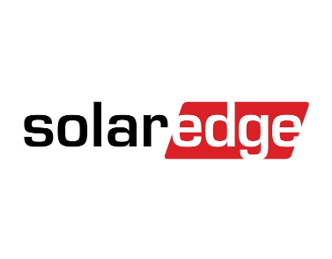
SolarEdge technologies
SolarEdge technologies sells power optimizers, solar inverters and monitoring systems for PV arrays. The products are designed for residential, commercial and utility-scale installations.

Oxford PV
Oxford PV commercializes a new technology for thin-film solar cells using solid-state perovskites, boosting the efficiency of current commercial cells.
123Fab #26
1 topic, 2 key figures, 3 startups to draw inspiration from

In recent years, the e-commerce market has grown exponentially. B2C marketplaces are continuously flourishing – Airbnb, DoorDash, eBay, Farftech, Uber, Zalando – paving the way for the rise of B2B ones. While Amazon Business and Alibaba, horizontal players, have been responsible for most of the traction in the online B2B market, new players – especially startups – are opening up huge opportunities for companies of all sizes in the vertical marketplace space. And you, do you have any B2B marketplace plans?
Unlike an online store, a marketplace is a platform where vendors can come together to sell their products or services to a curated customer base. After transforming consumer retail, hospitality and travel markets, marketplaces are now reshaping more complex industrial markets and supply chains – agriculture, construction, logistics, automotive, machinery & equipment, healthcare, etc. There are 2 main categories of marketplaces:
- Horizontal marketplaces: aim at multiple sectors to serve a wide range of products to a broad audience
- Vertical marketplaces: aim at a single sector to serve a niche of products to a target audience
In this newsletter, we will focus on vertical B2B marketplaces exclusively.
There are numerous startups that are making inroads into the B2B marketplace sector. French startup ManoMano, for example, is the largest European marketplace for gardening and home improvement. It distributes, via ManoManoPro, the products of more than 1,000+ manufacturers, including Schneider Electric, Bosch, Siemens, Karcher, etc. Pharmedistore is another example that sells medical supplies for chemists. It is precisely these niche third-party players that have given the impetus for reshaping industrial supply chains and have provided legacy industries the opportunity to tap into the potential of online B2B channels.
Another trend we see appearing is industrial giants establishing their own B2B marketplaces including Airbus and Thales in the aerospace; Alstom with StationOne in trains; Toyota Material Handling for forklifts; HP Enterprise for IT supplies; Farmers Business Network for Agriculture; FastMetals for iron and steel; CheMondis for chemical products, etc. But what are the forces that drive manufacturers to develop their own marketplaces which sell their competitors’ products?
- Horizontal and pure-players entering these industries – manufacturers are seeking first-mover advantages to become the first one-stop-shops before horizontal players (Amazon, eBay and Alibaba) or pure-players (startups) do
- The data collected on the transactions in the ecosystem – by analyzing data (e.g. top ten most-wanted materials or the industrial services with the highest increase in demand, etc.), trends become visible and manufacturers can anticipate and reinvent themselves
- To position themselves as a trusted interlocutor in a highly fragmented world – with this unifying role, manufacturers can become the interlocutor of a large number of small players that do not necessarily have the means to develop online
- To be more competitive – by putting their catalogs online and digitizing offline workflows (quotes, contract, telephone/email/fax, etc.), manufacturers maximize their chances of winning bigger contracts while acquiring new skills in digital marketing and trying out new business models they are not necessarily familiar with
That said, manufacturers often suffer from many supply-and-demand problems. That’s why B2B marketplaces are much more technical than B2C markets: relationships are personal (customer-specific and bulk pricing), buying cycles are long, procurement processes are complex, payment terms need to be flexible, shipping options need to be numerous, etc. Startups are developing APIs that integrate with B2B marketplaces to address these issues: Orderful modernizes the trading of electronic data interchange (EDI) data, BlueVine gives B2B companies an advance on their current invoices and Shippo offers multi-carrier shipping options.
Even if legacy industries still have a long way to go, we anticipate marketplace ecosystems to grow in prominence in the manufacturing and industrial sectors in the coming years. Over time, they will incorporate additional services such as supplier/buyer financing, insurance, integrated logistics and service warranty support.
2 Key Figures
742 B2B marketplace startups
in the world registered by Crunchbase
Market size expected to reach $3.6tn by 2024
According to financial services advisory firm iBe, worldwide B2B marketplace GMV could reach an estimated $3.6 trillion by 2024, up from an estimated $680 billion in 2018
3 startups to draw inspiration from
This week, we identified three startups that we can draw inspiration from: Mirakl, Reibus and Shippo.

Mirakl
Mirakl is a French marketplace publisher that helps businesses build out a marketplace with third-party sellers. In September, the startup became France’s 10th unicorn with is $300 million funding round.
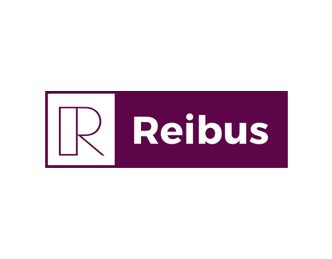
Reibus
Reibus provides an online marketplace intended to buy and sell prime and excess materials used in industrial markets.

Shippo
Shippo has developed a multi-carrier shipping API to assist businesses succeed through shipping.
123Fab #25
1 topic, 2 key figures, 3 startups to draw inspiration from
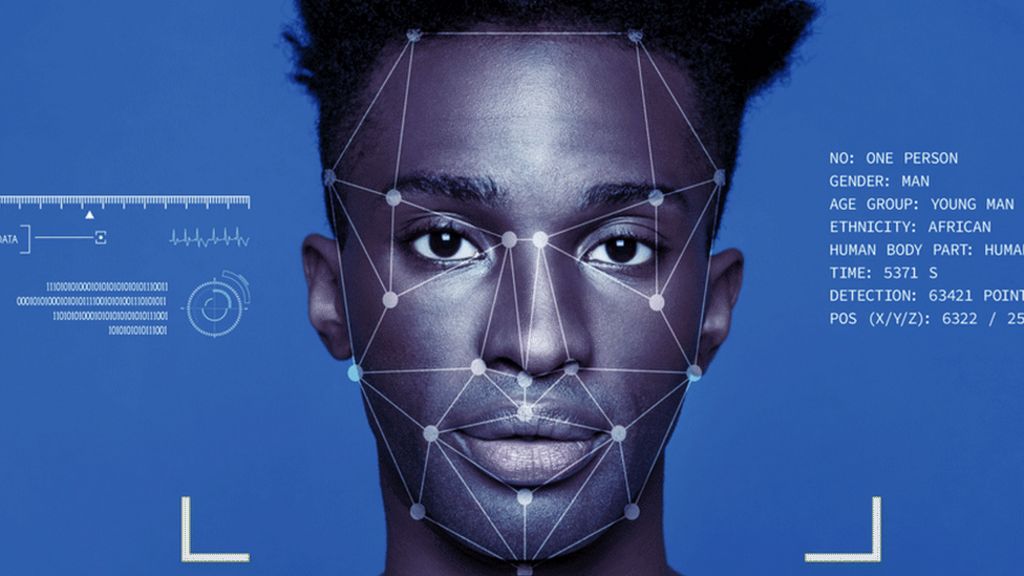
In recent years, China has invested substantially in surveillance cameras to become a global superpower. China’s unicorns – SenseTime, Megvii, CloudWalk and Yitu – represent 60% of China’s estimated market for computer vision and are pioneers in the biometrics market. More globally, industry players are positioning themselves in the contactless biometrics segment – particularly facial recognition – to respond to the changing business landscape.
Biometrics, defined as the means to reliably identify and authenticate individuals through unique biological characteristics, is playing a pivotal role. Many industries are demonstrating a real appetite for its benefits and use cases are spanning across a variety of sectors – security, healthcare, banking & finance, travel & hospitality, automobile, retail, government, education, military & defense, and many more.
There are 2 main categories of biometric solutions:
- Physiological solutions: morphological (face, fingerprint, hand, iris, etc.) and biological (DNA, blood, saliva, urine, etc.)
- Behavioral solutions: voice recognition, signature dynamics, gestures, etc.
In this newsletter, we will focus on facial recognition exclusively.
In recent years, facial recognition has invoked a lot of criticism – especially with China carrying out its social credit system based on the ranking of its citizens. It is the fear of an invasion of privacy that frightens the proponents of its use, who dread the emergence of a ‘Big Brother’ society, run by machines. This fear led to numerous protests in Hong Kong where citizens used umbrellas and masks to obscure their identity from the cameras. Lobbying efforts have also ramped up in many countries, prompting the US to recently put facial recognition Chinese unicorns on their ban list and to temporarily suspend the roll-out of the French government’s biometric-powered app Alicem – due to public outcries. Stakeholders also denounce the discrimination that can ultimately result from the use of unrepresentative datasets (ethnicity, gender or social class). Not to mention the concern about potential hackers, as biometric data, unlike passwords, is linked to a single identity that can never be changed.
Yet, facial recognition has already been integrated into a huge number of smartphones and the use cases are widespread. In other words, humans are saying that they are not ready when the technology is pretty much ubiquitous. In fact, in February, the EU unveiled its strategy to catch up with China and the US and dispel fears of ‘Big Brother’ like control.
There are many forces driving the adoption of facial recognition technologies:
- Increasing security concerns – the market is led by increased activity to combat crime and terrorism. In a context where China is massively investing in surveillance, Beijing-based startup Xloong has developed a pair of AR sunglasses to help the police identify and catch suspects. While two-factor and three-factor authentication was driven by the growing need for privacy and security, facial recognition technologies address this need while providing simplicity of connection.
- Ever-expanding uses cases – in recent years, the technology has expanded to new use cases that go beyond identification and authentication. One example is facial analysis, which healthcare professionals can use to measure pain and dysfunction or which retail companies can use to analyse customer emotion and product performance. It goes without saying that another application that has gained prominent adoption is in smartphones.
- The launch of Biometrics-as-a-Service (BaaS) – now small and medium-sized companies can deploy biometric technologies rapidly through APIs, for instance with Florida-based startup Kairos’ one.
- The technology’s maturity which is driven by its numerous applications
- Advancements in the algorithms – while traditional facial recognition systems had their loopholes (e.g. using a printed picture), today’s advanced recognition systems – powered by deep learning – deliver far superior accuracy. According to a recent NIST test, only 0.2% of searches (in a data base of 26.6 million) failed to match the correct image, compared with a 4% failure rate in 2014. This is a 20x improvement.
- Low cost of edge AI processors – the overall cost of implementing embedded processors are driving down. San Diego-based startup Kneron (backed by Sequoia, Alibaba and many more) announced early September the launch of its new AI chip, whose power and cost outperforms those of Intel and Google.
What is important to bear in mind is that the rollout of facial recognition technologies (when not BaaS) cannot be done without a total rethink of IT legacy systems. It is crucial to implement high-performance processing, storage and encryption solutions beforehand. Heightened education and awareness is key to prevent identity theft. Regulations also need to keep up to ensure that the technology will ethically and positively shape human identity applications.
The pandemic is changing the dynamics in the facial recognition technologies market. Since masks obstruct today’s recognition software (based on features around the eye, nose, mouth, and ears), the pandemic has spurred – in a conjectural way – the development of technologies designed to identify and authenticate people wearing masks or protective headgear. However, the long-term impact has yet to be proven.
2 Key Figures
1,262 Biometric startups
in the world registered by Crunchbase
Market size expected to reach $68.6bn by 2025
According to Markets & Markets, the global biometric market accounted for $36.6 billion in 2020 and is expected to reach $68.6 billion by 2025 growing at a CAGR of 13.4% during the forecast period.
3 startups to draw inspiration from
This week, we identified three startups that we can draw inspiration from: Onfido, Kairos and Anyvision.

Onfido
Onfido uses AI and facial biometrics to ensure that IDs are genuine and match with users presenting them. This enables their customers to onboard users remotely while reducing risk.

Kairos
Kairos enables developers and businesses to easily build face recognition into their software products using their API.

Shippo
AnyVision is a video analytics company specializing in face and human recognition in mass crowd events in real time.
123Fab #22
1 topic, 2 key figures, 3 startups to draw inspiration from

Towards CO2 Capture
”The deployment of carbon capture and storage (CCS) technology is not optional if the world hopes to meet the targets set out in the Paris Climate Agreement”, stated recently the International Energy Agency. Carbon Capture and Storage is a technology that can capture up to 90% of the carbon dioxide (CO2) emissions produced from the use of fossil fuels in electricity generation and industrial processes, preventing the CO2 from entering the atmosphere, or removing the CO2 that already reached the atmosphere. The CCS chain consists of three parts: capture, transport and storage of carbon dioxide emissions. In this newsletter, we will focus on the carbon capture segment exclusively.
There are two types of carbon capture methods: CO2 can either be captured at its source (power plants, industrial processes) and then stored in non-atmospheric reservoirs or it can be removed from the atmosphere (e.g. with forests). Most technologies fall into the first segment. In the context of increasing ecological awareness, interest in carbon sequestration has grown as capture could achieve 14% of the global greenhouse gas emissions reductions needed by 2050.
The main sources of CO2 containment that need to be tackled are the following:
- Natural Gas extraction: 10 to 20% of the CO2 contained in natural gas needs to be extracted before any usage – represents 73% of the industrial CO2 captured
- Hydrogen production: a lot of CO2 is produced during the steam reforming production process – represents 18% of the industrial CO2 captured
- Biogas: up to 50% of CO2 needs to be extracted to have a proper quality after biogas production
Carbon capture technologies separate CO2 from other gases by one of these three methods:
- Pre-combustion capture: it removes CO2 from fossil fuels before combustion is completed, through processes such as gasification (converts carbon-based materials by reaction at high temperature into synthesis gas) or reforming (converts carbon-based materials by reaction with water to produce synthesis gas, hydrogen or carbon monoxide). The Caledonia Clean Energy Project in the UK (due for the mid-2020s) will use gasification to capture more than 90% of the carbon emitted from a natural gas power plant.
- Post-combustion capture: it removes diluted CO2 (~5-15% CO2 concentration) from the flue gases once the fuel has been fully burned within the air. R&D efforts in post-combustion capture are focused on sorbents, membrane systems, and also novel concepts (e.g. hybrid systems that efficiently combine attributes from multiple key technologies). The Petra Nova project in Texas is the largest post-combustion capture solution and removes 92% of the CO2 from the plant.
- Oxy-fuel combustion systems: fossil fuels are combusted in a nearly pure oxygen environment, as opposed to air. The main purpose of using oxy-fuel combustion is to generate flue gas with very high concentrations of CO2 and water vapor, making it possible to separate or capture the CO2 from the flue gas purely by low-temperature dehydration and desulfurization processes. Air Liquide is taking part in several large-scale research projects in Europe and in North America, testing oxy-fuel combustion processes, such as the Lacq Project in the south of France where Air Liquide will supply TOTAL with oxygen at a rate of 240 tonnes per day.
Carbon capture is technically feasible and has existed for 40 years. Nearly two dozen commercial-scale carbon capture projects are operating around the world and 22 more are underway. For instance, since 2017, the ADM Illinois Industrial Carbon Capture & Storage Project has been capturing CO2 from an ethanol production facility and sequestering it in a nearby deep saline formation. The project can capture up to 1.1 million tons of CO2 per year.
Although carbon capture is feasible, there are economic reasons that explain its limited adoption. Most CCS applications are currently not economically viable and there is a lack of government policies to support the technology. Two changes would be required for CCS to become economically viable in those categories. First, the cost of carbon capture must come down, either through the development of new technologies or through scale and experience effects. Second, the value of captured CO2 emissions must increase, through new uses and sources of demand. The carbon tax could accelerate its adoption if it is high enough to be binding (as in Norway) or if there is a post-capture carbon market (as in the US where petrol companies buy carbon to increase their productivity, although this example is not a very eco-friendly approach). In France, on the contrary, the carbon tax is too low compared to the high investments that require carbon capture.
Yet, more and more startups are positioning themselves in this segment and are raising funds. In June 2020, Climeworks, a Swiss climate startup, raised 73 million Swiss francs ($76 million) in a private funding round. It builds machines that capture CO2 from the air and store it in a solid-state underground. It also takes the CO2 and delivers it to industrial clients, such as The Coca-Cola Company, to put bubbles in drinks.
Finally, with regard to its environmental impact, attention should be drawn to the need to use additional fossil fuels for carbon capture solutions. The use of CCS with renewable biomass is one of the few carbon abatement technologies that can be used in a ‘carbon-negative’ mode.
All in all, the carbon capture market has existed for half a decade, but the timing seems right. Plans for more than 30 new integrated CCUS facilities have been announced since 2017 and many startups are addressing this market as well. Furthermore, the trend in CCS investment is on the rise. On September 1st, 2020, the U.S. Department of Energy announced the award of approximately $72 million in federal funding to support the development and advancement of carbon capture technologies.
2 Key Figures
56 Carbon Capture startups
in the world registered by Crunchbase
Market size expected to reach $6.1bn by 2027
The global carbon Capture market size was valued at $1.8bn in 2019 and is expected to reach $6.1bn by 2024.
3 startups to draw inspiration from
This week, we identified three startups that we can draw inspiration from: SeeO2, Climeworks and C-Capture.

SeeO2
See O2 Energy is a Canadian startup working to efficiently convert carbon dioxide and water into marketable and clean value-added products using reversible fuel cell technology. This solution makes it possible to effectively capture and use carbon to produce fuels, power, heat, and oxygen.

Climeworks
Climeworks is a spin-off company that develops a carbon dioxide reclaiming system. Its product extracts carbon dioxide from ambient air. It builds three models based on the amount of CO2 extracted. Its chief target markets are F&B companies that use CO2 for aeration in food processing and greenhouse owners. It also intends to enable the creation of carbon-neutral synthetic fuels using extracted CO2.
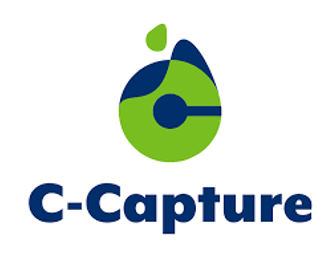
C-Capture
C-Capture, a spin-off from the University of Leeds, developed a bottom-up approach to design solvent systems for the removal of CO2 from gas streams. The patented technology captures CO2 from methane gas streams as it passes through and upgrades biogas. Reversibly captures carbon dioxide from power stations, steel and cement production, and fermentation units.
123Fab #14
1 topic, 2 key figures, 3 startups to draw inspiration from
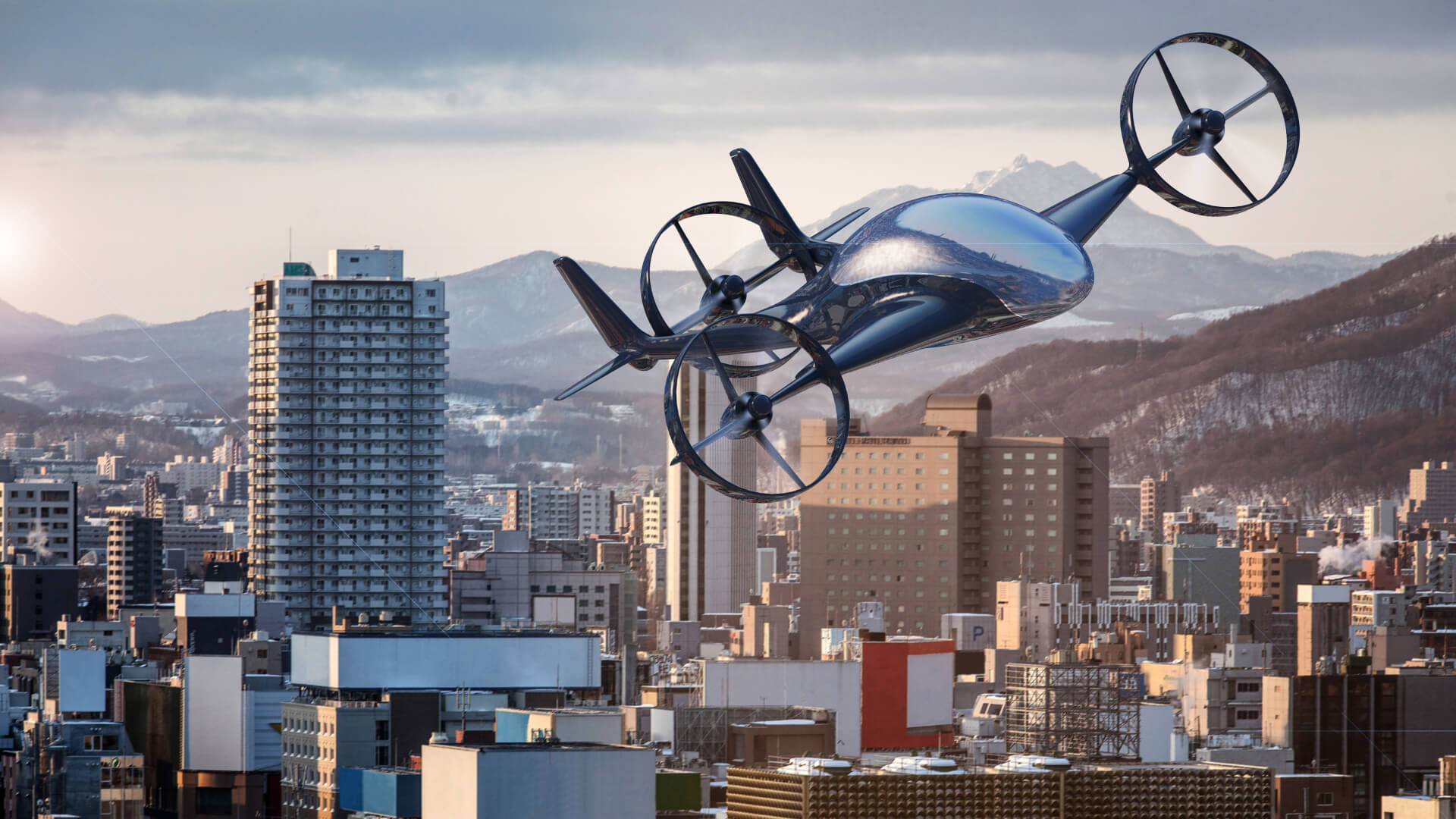
Will Covid-19 propel urban air mobility?
The 2020s are expected to be the decade of the Urban Air Mobility (UAM) revolution. Self-flying vehicles and drones hovering over cities have already been tested. A growing number of large transportation and aerospace companies – including Uber, Airbus and Hyundai – as well as venture-backed startups are racing to launch the first electric vertical take-off and landing aircraft (eVTOL). And there seems to be an emerging consensus that the electrification of aviation will be the next fundamental transportation disruption, including in urban areas. But will it actually disrupt urban mobility?
Air transport for passengers and goods will undeniably be part of the urban mobility landscape, especially in large urban areas and megacities where there is a need to reduce congestion, commute times and pollution. The first prototype flights for autonomous electric flying vehicles and drones are already underway, made possible by multiple breakthrough innovations:
- Electric propulsion is a major technology used to fly eVTOL with no aircraft noise and emissions during take-off and landing. Current aircraft prototypes are equipped with electric motors powering multiple rotor blades that generate lift.
- Most Urban Air Vehicles (UAV) are electric and battery-powered and improvements in battery and energy technologies, in particular lithium-ion batteries, have been crucial in the rise of electromobility, including air electromobility.
- Advances in hydrogen storage and fuel cells technologies, which are an alternative to battery technologies, are likely to make UAV more sustainable.
- AI technologies will facilitate traffic management systems, but mostly help make aircrafts autonomous.
- Finally, production techniques are quite similar to those of the electric automotive and aviation industries, with high quality standards and R&D to find the best technologies and materials. The materials used in the production of UAV have to be particularly lightweight and resistant, like carbon-fiber composites and superalloys.
However, these technologies are still under development. For instance, the use of electric batteries brings a new set of challenges, including uncertainty about the weight of the batteries and charging times and the imbalance of electric grids. Aircrafts’ electric rotors need a lot of energy to operate, which means that they have to be equipped with several high-energy batteries that are particularly heavy and need a couple of hours to charge.
A number of technological challenges remain, but also many regulatory and governance concerns regarding the use of flying vehicles in cities:
- Noise and turbulence in cities: rotating blades produce noise and wind nuisance during take-off and landing. Because of the noise generated, cities and populations can be against flying vehicles.
- Airspace management: the adoption of UAV will require airspace regulations to avoid accidents, infractions, drifts as well as visual pollution. Flying vehicles aim to be autonomous in the long term, but some aircrafts need pilots, which means that flying such a vehicle will require training and a flight licence.
- Safety is one of the biggest concerns for UAM. There are many aspects to consider, including the aircraft and weather conditions.
- Public acceptance is another challenge for UAM advocates: will people trust autonomous flying vehicles and are they willing to accept airspace congestion?
- Take-off and landing infrastructures are critical for success: it is not only about the vehicles themselves, but how they fit in a Smart City design.
- The business model for people transportation has to be demonstrated: should this type of mobility remain fully private or subsidized by the city? As the current prototypes can carry less than 10 people, can these small eVTOL shuttles be financially viable?
To conclude, there is still a lot of work to be done before the sky fills up with autonomous electric vehicles, especially in terms of autonomy and security. Most cases are currently focusing on autonomous delivery vehicles as a means of testing in a lower-risk environment, before launching a passenger flight. The market is still extremely young and production and exploitation costs are still very high. This type of transport will thus be intended for a social elite at first. The democratization of UAM is however not fully certain yet, as the other urban mobility means, including micro mobility, increasingly and smoothly integrate into the existing ground transportation networks. The price to be paid for each minute saved with urban mobility (still to be confirmed if there is a cumbersome take-off/landing process and if the infrastructure is insufficient) remains an unanswered question today.
2 Key Figures
110 Urban Air Mobility projects identified worldwide
almost half of which are in Europe
Market size expected to reach $15.2bn by 2030
According to Markets & Markets, the global urban air mobility market was valued at $5.3 billion in 2018 and is expected to reach $15.2 billion by 2030.
3 startups to draw inspiration from
This week, we identified three startups that we can draw inspiration from: Windcopter, NaviFly and H55.

Wingcopter
Wingcopter is a German startup creating eVTOL aircrafts dedicated to commercial and humanitarian applications.

NaviFly
Based in Ireland, NaviFly develops an air traffic control platform that organizes the drone airspace and enables their operations and logistics within urban areas.

H55
H55 is a swiss startup developing certified electric propulsion and battery solutions to make aviation clean, quiet, efficient and ultimately autonomous.
123Fab #12
1 topic, 2 key figures, 3 startups to draw inspiration from

Smart Maintenance Operations: from preventive maintenance to predictive maintenance
According to a study conducted jointly by KPMG and L’Usine Nouvelle, two-thirds of the companies surveyed consider the increasing availability of equipment in factories to be a top priority over cost reduction and quality improvement. In fact, plant downtime can be very costly — ranging from $10,000 to $50,000 per minute — depending on the industry (e.g. $22,000 for the automotive industry). However, wrench time in factories has remained stable for almost a decade, demonstrating a real gap between the need for productivity and maintenance efficiency.
In the past, maintenance services were mainly corrective and preventive, meaning that equipment was repaired in the event of an immediate failure or default, or that preventive maintenance operations were scheduled based on time and usage parameters. This maintenance management was based solely on the assumption that the equipment would be degraded after a certain period of time.
Over the past two decades, the adoption of digital technologies has paved the way for smart maintenance. In particular, advances in data management have made it possible to shift from preventive to condition-based maintenance. Condition-based maintenance monitors the condition of an asset in real-time to determine when a parameter reaches an unsatisfactory level in order to plan a maintenance intervention.
More recently, the ongoing transformation of manufacturing practices, driven by machine learning, artificial intelligence and automation, has led to the rise of Smart Maintenance in factories. Several startups are now positioning themselves on this market and developing innovative solutions to optimize and facilitate maintenance operations, based on 3 main pillars:
- Asset monitoring and geolocation, which uses data analysis to provide real-time visibility on the location and condition of the materials and assets within the supply chain. As part of asset monitoring, predictive maintenance allows to accurately predict when a component will fail and determine when to repair it, reducing downtime costs. It often involves the creation of a Digital Twin, a digital replica of a physical asset, developed to replicate the original behavior model.
- Reverse engineering and 3D scanning technologies, which uses data to create 3D virtual models for Computer Aided Manufacturing and Computer Aided Design softwares. These models can be used as a complement to virtual and augmented reality to train workers to maintenance operations.
- Blue Collar Empowering technologies, such as voice recognition, instruction digitalization and project management softwares, which improve worker performance. These technologies are efficient assistants because they save maintenance workers from typing their maintenance or reading complex manuals.
In conclusion, Smart Maintenance has become crucial to maximize uptime and reduce production costs, but also to extend equipment lifetime, ensure compliance and enhance security and energy consumption. However, manufacturing companies may be a little reluctant given the significant investment involved in the transition to Smart Maintenance, especially in this time of crisis. Smart maintenance operations also addresses the critical need for energy optimisation. In France, 20% of energy savings in the industrial sector can still be easily achieved through smarter equipment. Aster Fab is committed to the energy transition in the industrial sector through the INVEEST Programme, an initiative that supports financial and industrial professionals in their transformation. Please contact us to learn more.
2 Key Figures
135 Digital Twin startups
are focusing on developing solutions for the Logistics, Supply Chain, and Maintenance sectors
Market size expected to reach $12.3bn by 2025
According to Markets & Markets, the global predictive maintenance market was valued at $4bn in 2019 and is expected to reach $12.3bn by 2025.
3 startups to draw inspiration from
This week, we identified three startups that we can draw inspiration from: Falkonry, Polyga, and Datch Systems.
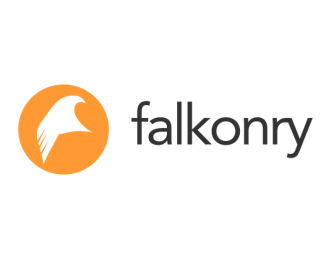
Falkonry
Falkonry is a US-based startup offering a ready-to-use machine learning system that helps companies improve their industrial operations in terms of performance, throughput, quality and yield.
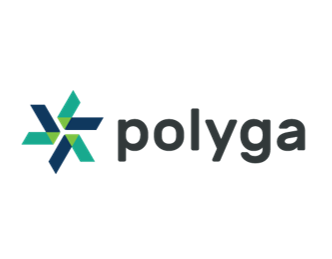
Polyga
Polyga is a Canadian startup developing 3D scanners and a mesh processing software to facilitate the use of scan data within Computer Aided Design and Computer Aided Manufacturing systems.

Datch Systems
Based in the UK, Datch Systems develops an intelligent voice interface for industry, enabling blue workers to use their voice to document their work.
